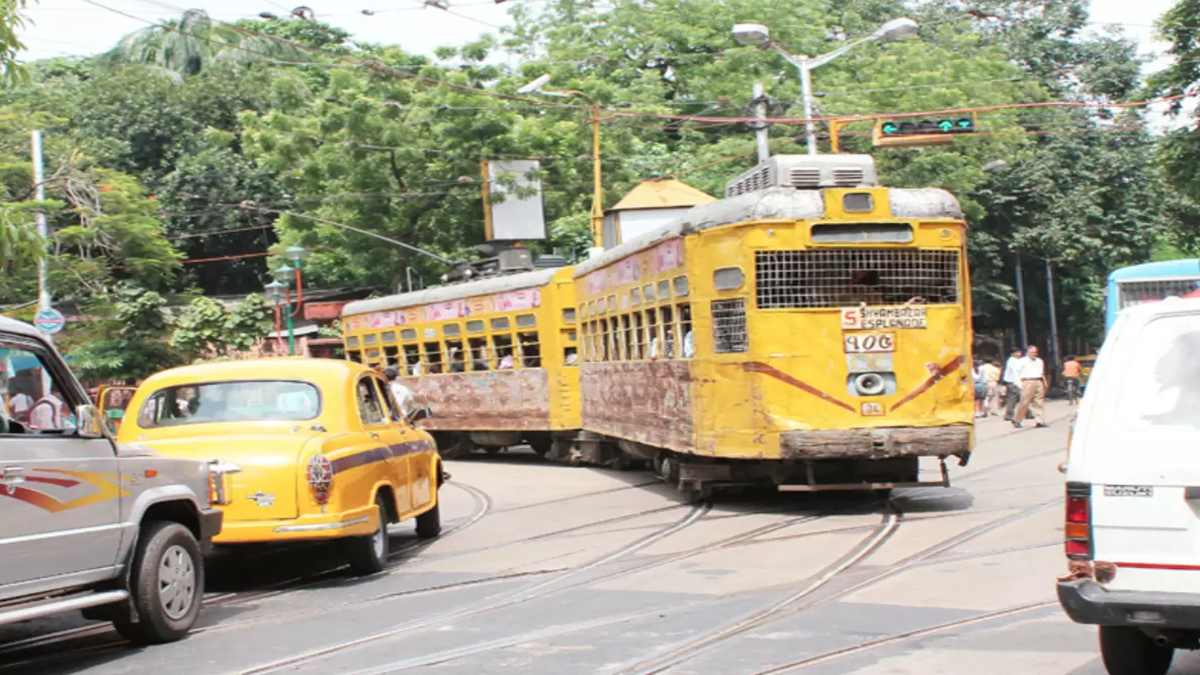The recent announcement by West Bengal transport minister Firhad Hakim has practically signaled the death knell of Kolkata tramways, the only city in India which still operates trams. The plan is no more to revive the tram route in the popular north Kolkata route. The plan now is to operate trams only in routes where dedicated carriage way exists for trams. This, in turn, implies one or two routes in south Kolkata where trams can operate if we go by the minister’s policy decision. There is a plan to operate trolley bus on trial basis in the coming year in north Kolkata tram routes using the existing overheard electricity wires of tram, though substantial modification is required to amend it for trolley bus, including installation of additional wires. The final decision to introduce trolley bus will be made if the trial operation is found to be successful. In the meantime, the focus is on battery operated electric bus (BEB), for which the Kolkata Transport Corporation has given substantial order. Given the financial condition of the Kolkata Transport Corporation, ideally, the choice should be primarily based on what mode is the least costly taking into account the life cycle of the transport medium, which basically includes all-inclusive operation costs, in addition to the capital cost of purchasing the vehicle (electric bus, tram, trolley bus). This also needs to be normalized based on the carrying capacity of the vehicle.
Trams are three times more energy-efficient than most buses. Their use of mains electricity is more efficient than rechargeable batteries in electric buses. They provide a higher capacity service (you can get more people on them and can add and remove cars as you need) with just one driver. Research in Europe and North America shows that car commuters are willing to transfer some trips to rail-based public transport, but not to buses. Typically, light rail systems attract between 30-40% of their patronage from former car trips. Controlled acceleration and braking make for a more comfortable passenger experience. Incidentally, the tram workshop at Nonapukur has successfully built several trams. It would be cheaper to use the facility to build new trams there than acquiring new BEBs. By all evidence, electric bus seem to be the preferred choice of Kolkata State urban transport. Incidentally, this is also a costly proposition which may aggravate the financial health of the corporation. Somehow, CNG/biofuel based bus does not seem to a preferred choice for the corporation. Ideally, one should have looked at the cost estimate before making an informed choice.
If we go by the current price, acquisition costs of electric buses is more than twice of a normal CNG based bus. Of course, the price of trolley/hybrid bus is about 20% lower than that battery operated electric bus.
Coming to Vehicle Operating Costs (VOC), fuel represents 40% of the total life-cycle costsof CNG buses. Lower consumption by hybrid and electric buses translates into savings of up to 15% in VOC for hybrids, and 40% for electric buses.
A major cost of battery operated electric bus is battery replacement. The batteries typically need replacing after 6 to 8 years, while the lifespan of buses ranges from 10 to 12 years, meaning batteries needto be replaced at least once during the life-cycle of a bus. Battery replacement represents 15% of the purchase price of a hybrid bus, and 50% of the price ofan electric bus. If the battery needs to be replaced twice for a battery operated electric vehicle, obviously, it would be a heavy burden on the transport authority. There are other cost issues which need to be accounted when one considers BEB. Firstly, because of issues like charging downtime and maximum passenger load restrictions caused by battery weight, a BEB fleet using depot charging needs to be at least 20% larger than a diesel or trolleybus fleet to maintain the same timetable and passenger throughput. Thus, a BEB fleet of 300 is needed to replace a bus or trolleybus fleet of 250 vehicles. The comparison with tram is starker as the carrying capacity of two-carriageway tram is more than two BEBs.
Secondly, a BEB fleet typically needs to be 20% bigger than for the equivalent diesel or trolley bus fleet. The installation of large transformers, Energy Storage System (ESS) and backup generators together with the individual charging units will also take up additional space. Thus, one needs large depot space, which may cost a lot in a city like Kolkata which suffers from chronic space shortages.
BEB is not a good option, considering the financial health of Kolkata urban transport corporation. And, of course, not at the cost of the tram when we see a revival of trams in many European cities. The off-repeated assertion that trams cause congestion is not right as the congestion mostly takes place due to other vehicles encroaching upon tram routes.
Sanjib Pohit is a Professor at National Council of Applied Economic Research. Views are personal.





















